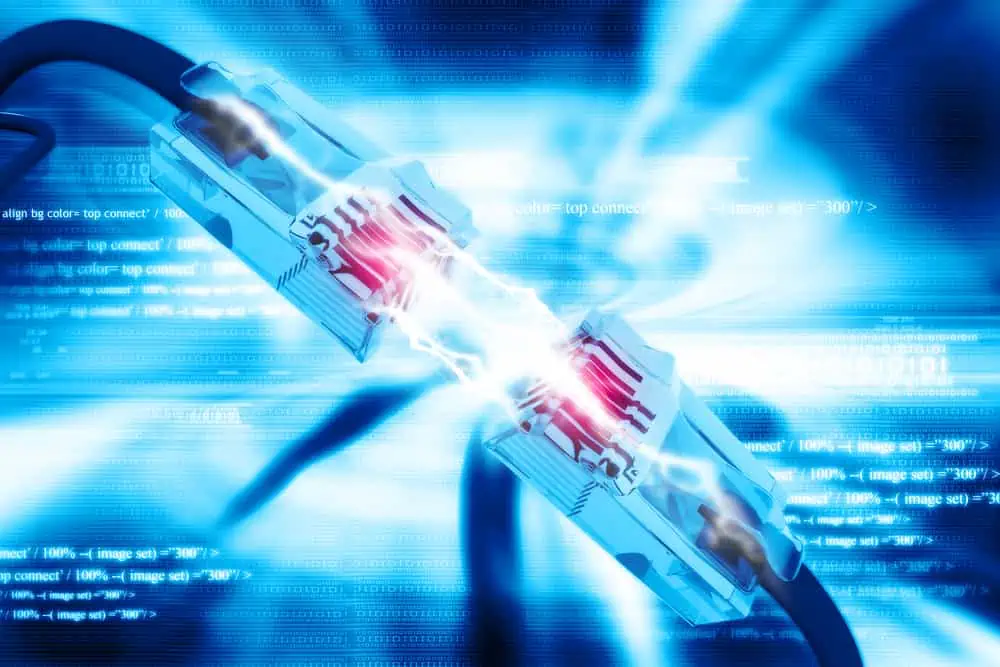Are you interested in learning about WiFi sniffing? This article covers all the essential details you need to know about this network analysis technology.
Overview
WiFi sniffing, also known as WiFi packet sniffing, is a process of intercepting/eavesdropping and analyzing the traffic of a wireless network. It involves capturing and decoding data packets sent between devices over a wireless network.
Moreover, both wired and wireless networks can be sniffed. However, wireless networks are easier to sniff because they use radio signals to communicate.
That being said, Wi-Fi sniffing can be used for various purposes. These include network troubleshooting, security analysis, and performance optimization.
Moreover, WiFi sniffing typically involves using a software tool called a packet sniffer. This software tool listens for data packets transmitted over a wireless network.
Then, it records the data contained in those packets. These data include the source and destination addresses, the transmitted data type, and other relevant information.
Although Wi-Fi sniffing is a robust network analysis and optimization tool, some use it unethically and for devious purposes. For example, hackers can use it to intercept and analyze wireless network traffic.
Doing so allows them to access sensitive information, like credit card numbers, passwords, and login details. Thus, it is essential to use Wi-Fi sniffing responsibly and ethically.
Besides, unauthorized WiFi sniffing is illegal and can result in severe consequences. As a matter of fact, you can face jail time if you use WiFi sniffing illegally.
Features of WiFi Sniffing
The previous section explains what WiFi sniffing is. However, this section will discuss some of its significant features.
It Has Two Modes
Wi-Fi sniffing typically has two modes – monitor mode and promiscuous mode. In monitor mode, a wireless adapter is told to listen for the radio signals other wireless devices send.
However, it is not instructed to broadcast any signal of its own. This mode of Wi-Fi sniffing is almost impossible to detect because the sniffer does not broadcast radio signals.
Meanwhile, a sniffer becomes associated with a wireless access point in promiscuous mode. This allows all data on that particular access point to be monitored.
However, it could expose the sniffer.
Supports Multiple Protocols
Wi-Fi sniffing tools supports several network protocols. These include TCP, UDP, ICMP, and others.
This allows network administrators to monitor and analyze different types of network traffic. These network traffic include web traffic, email traffic, and file transfers.
Hence, multiple protocol support is vital for organizations with diverse network traffic.
Real-time Monitoring
Real-time monitoring is a crucial feature of WiFi sniffing tools. This is because it allows network administrators to detect and respond to any issues or security threats as they occur.
This means administrators can quickly identify network issues, such as congestion, bandwidth issues, or security breaches. With real-time monitoring, network administrators can also identify the source of any problem, enabling them to take corrective action fast.
Additionally, real-time monitoring allows administrators to identify patterns and trends in network traffic. Therefore, allowing them to optimize network performance and improve the user experience.
Cross-platform Compatibility
Cross-platform compatibility is another valuable feature of WiFi sniffing. Network administrators can use the tool on various operating systems and platforms.
This means administrators can analyze network traffic from any device, including desktops, laptops, and mobile devices. Cross-platform compatibility guarantees administrators can use the tool on their preferred platform without worrying about compatibility issues.
Packet Filtering
Packet filtering is a helpful feature of WiFi sniffing tools, allowing administrators to filter out specific packets. It filters out packets based on criteria such as source or destination IP address, port number, protocol type, or data payload.
Moreover, packet filtering can help network administrators focus on the most relevant packets for their analysis. Therefore, lowering the amount of data they need to analyze and increase the efficiency of their analysis.
Pros of WiFi Sniffing
Helps Reduce Network Downtime
Wi-Fi sniffing can help administrators quickly identify and respond to network issues.
Therefore, reducing network downtime and minimizing the impact on users. By detecting network issues in real-time, administrators can take corrective action before they escalate into severe problems.
It Improves Security
WiFi sniffing can help administrators detect security threats by monitoring network traffic for suspicious activity.
For instance, administrators can sniff WiFi to detect unauthorized access attempts resulting in potential data breaches. By detecting these threats early, administrators can take steps to protect the network and its data.
It is a Cost-effective Troubleshooting Solution
WiFi sniffing helps administrators cost-effectively troubleshoot network issues.
Hence, network administrators won’t need expensive diagnostic equipment or specialized expertise. Basically, by using WiFi sniffing tools to analyze network traffic patterns and identify potential issues, administrators can resolve problems quickly and efficiently.
Better Network Planning
Wi-Fi sniffing can help network administrators plan for future network upgrades or expansions.
It does this by providing insights into current network usage and capacity. By analyzing network traffic patterns and usage trends, administrators can make informed decisions around network capacity planning.
Therefore, ensuring that the network can handle the demands placed on it in the future.
It Improves Network Management
WiFi sniffing can help administrators manage a network more effectively by offering detailed information about usage and performance.
The information obtained can make it easier for the administrators to make informed decisions. Also, it can ensure that the network is optimized for the needs of the organization.
Cons of WiFi Sniffing
It Can be Used Maliciously
Hackers can use WiFi sniffing to get sensitive information such as passwords, usernames, and credit card numbers from a wireless network.
That information can be used to blackmail individuals or access their accounts.
Legal Implications
Using Wi-Fi sniffing tools without permission can be illegal in some jurisdictions.
This can lead to legal action against the responsible person or organization. Therefore, you should ensure you have the legal permissions to use specific WiFi sniffing tools.
Also, you need to comply with any applicable laws or regulations to avoid any legal charges.
Complex Analysis
Analyzing data obtained by WiFi sniffing tools can be complicated and time-consuming.
Hence, you might require significant expertise and specialized tools. Therefore, organizations should ensure they have the necessary resources to analyze data obtained by Wi-Fi sniffing tools effectively.
Otherwise, they should consider outsourcing this function to a third-party provider.
Resource-intensive
Tools or software used for WiFi sniffing can be resource-intensive.
Hence, they require powerful computers and significant storage capacity to capture and analyze data over extended periods.
Frequently Asked Questions
Wi-Fi sniffing can be done remotely using specialized software tools and devices. However, remote WiFi sniffing may require additional legal and ethical considerations.
Also, organizations should carefully evaluate the risks and benefits before implementing it.
WiFi sniffing tools can obtain a wide range of data. These include IP addresses, MAC addresses, URLs, passwords, usernames, and other data transmitted over the wireless network.
However, the effectiveness of the data obtained may be limited by factors like encryption and network traffic volume.
The legality of Wi-Fi sniffing varies depending on jurisdiction and use case. Generally, obtaining and analyzing wireless network traffic on your wireless network is legal.
However, it may be illegal or require special permissions in other circumstances.
Wi-Fi sniffing is the process of obtaining and analyzing the traffic of a wireless network. This is done to gain insights into the network’s performance and security.
WiFi sniffing is mainly used for network troubleshooting, performance monitoring, and security analysis. It can also be used to identify bottlenecks in network traffic and detect unauthorized devices or activity.
That’s not all; network administrators also use it to identify potential security threats such as malware or phishing attacks.
Conclusion
WiFi sniffing can be helpful for performance monitoring, network troubleshooting, and security analysis. It enables network administrators to gain insights into the traffic of a wireless network.
Therefore, identifying potential issues, bottlenecks, and security threats before they escalate. However, there are also potential drawbacks to Wi-Fi sniffing.
These include legal and ethical concerns, malicious usage, and complex analysis. Thus, organizations and individuals should carefully evaluate the benefits and risks of Wi-Fi sniffing.
Also, it would be best to implement it only after obtaining proper legal permissions and ensuring it is used ethically and responsibly.
Hopefully, you found this article informative. If you did, we value your feedback and would love to hear your thoughts.
Take a moment to leave your comments using the “Leave a Reply” form at the bottom of this page.
Alternatively, you can respond to the “Was this page helpful?” question below.
You can visit our Internet & Networks Explained page to explore more insightful articles like this one.



